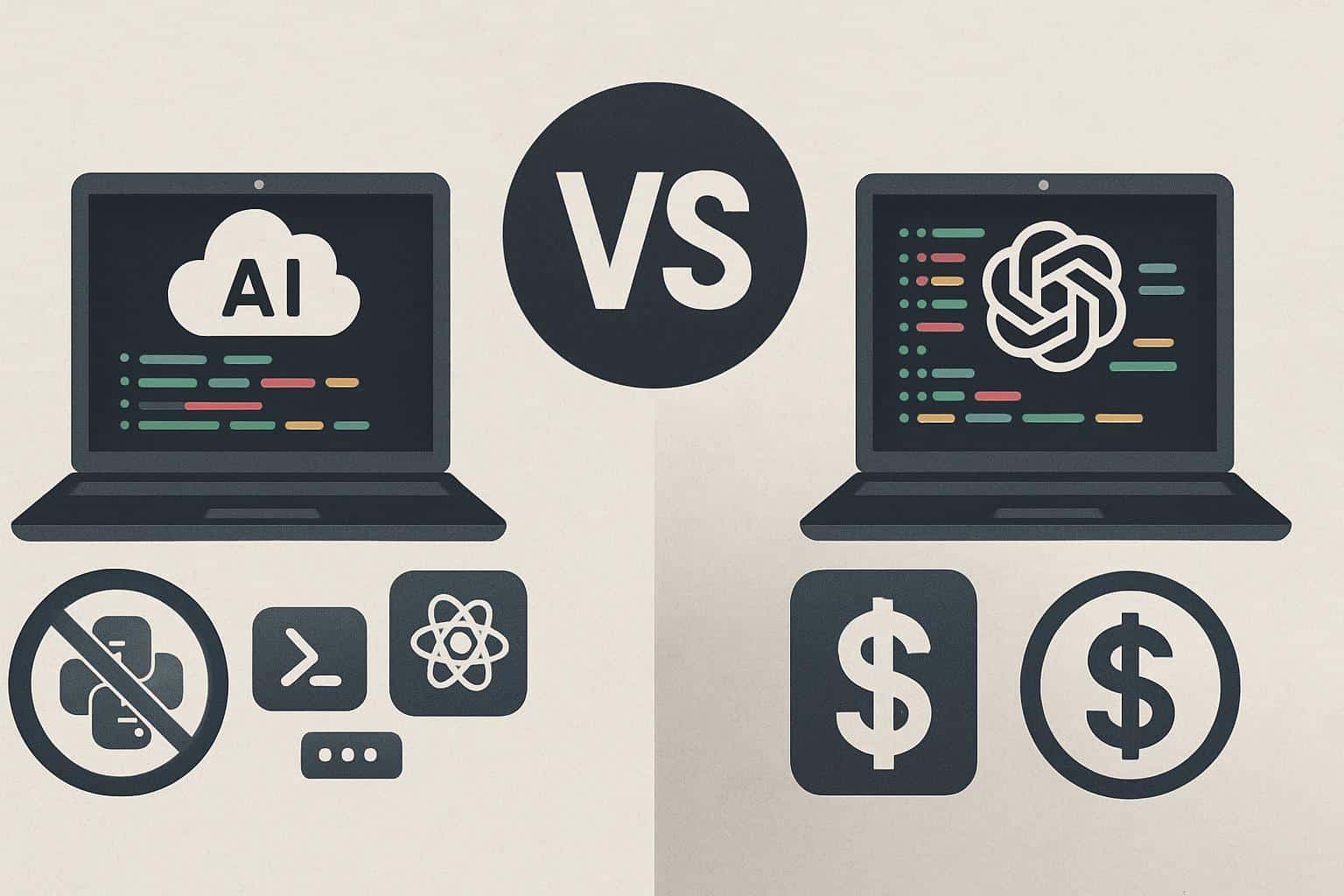I gave free and paid AI coding tools the same dry run: building features, fixing bugs, writing tests, and refactoring live code. After weeks of practical use with Python APIs, React front ends, and infrastructure scripts, I now know which option I’d reach for, and why the “right” answer depends on your workload.
It is no longer a question of adoption. Both GitHub’s Octoverse and Stack Overflow’s Developer Survey find that a majority of developers are now using AI at least part of the week, with IEEE noting a move towards more senior engineers having AI to boost output. The actual decision is between budget and benefit: no-cost chatbots, mid-range IDE assistants, or more expensive autonomous agents.
- How I Tested Free and Paid AI Coding Tools in Practice
- What Free AI Coding Tiers Get Right and Where They Fit
- Where Paid Plans Shine for Daily Coding and Refactoring
- The Hidden Costs and Risks of Relying on AI Coding Tools
- Privacy, Security, and Compliance Considerations for Teams
- Verdict: The AI Coding Tool I Would Choose and Why

How I Tested Free and Paid AI Coding Tools in Practice
I consider three types of tools: general chatbots, IDE-integrated assistants, and coding agents capable of issuing commands, modifying multiple files, or opening pull requests. I tested correctness, latency, context handling in large codebases, rate limits under load, and time to production quality. I did everything afterward, too: with version control, CI, and unit tests inside a real developer stack to play honestly.
To be fair, I limited prompts to things developers might actually do: paste an error trace, ask it to write tests, request a refactor with acceptance criteria, and let agents take multiple steps in parallel end-to-end. I monitored the acceptance rate of suggestions, # lines changed, time-to-deploy, and time wasted from poor outputs or throttling.
What Free AI Coding Tiers Get Right and Where They Fit
Free chatbots excel at small, well-scoped asks: a difficult regular expression, a one-off SQL query, fixing FastAPI serialization, or writing docstrings. They’re great teachers of unknown libraries and instant explainers for cryptic stack traces. In my runs, I took maybe a quarter or a third of free suggestions, and the rest needed either an edit or to be thrown away.
The ceiling appears quickly. Free tools have a bad time with repository-wide context and forget from one few-screens-long conversation to the next, right when you’re hitting your stride. They’re great for brainstorming and scaffolding, less so for reliable delivery inside a living codebase with tests, linters, and CI gates.
Where Paid Plans Shine for Daily Coding and Refactoring
Then paid IDE-integrated helpers changed the landscape. With inline completions, multi-file awareness, and quick-fix prompts integrated with the editor, they significantly reduced my interruptions and increased alignment with project idioms. Example: moving a group of React class components to hooks and sprinkling in some accessibility enhancements turned from a multi-day refactor into a dedicated afternoon with tests created in parallel.
Coding agents are another animal. When presented with the task to implement a Terraform module with policy checks included, update CI config accordingly, and open up a reviewable PR, an agent performed these steps, wrote the scaffolding code, and all I had to do was cover edge cases. Here is where time really condenses: for feature work, paid tools always saved me at least 40 to 60 percent on manual effort.

These findings are consistent with those of vendors as well as independent researchers, who have found that developers work more quickly and accept a large proportion of AI’s suggestions. In my testing, the uplift wasn’t only across raw speed; there was more: fewer context switches and fuller changesets, especially if I let it see the whole repo.
The Hidden Costs and Risks of Relying on AI Coding Tools
Performance isn’t linear. Some services, under heavy use, throttle or pause; it’s not uncommon for edits — in zero gravity — to stall. That can leave code in an unknown state, unless you keep your commits tight. Hallucinations do still happen: made-up API invocations, outdated idioms, or refactors which they see as passing the tests but don’t meet operational requirements. View outputs in the same way you view your team’s intern-level work: valuable, but never taken as gospel.
There’s also vendor lock-in and reproducibility. This non-deterministic output makes diffs less pleasant to reason about. FWIW, I blunted risk through the use of feature flags, small PRs with crystal-clear descriptions, and tests required for any agent-led change. When it’s about tempo, this discipline can pay for itself.
Privacy, Security, and Compliance Considerations for Teams
For teams working with sensitive code, free isn’t just about capability — it’s about exposure of data as well. Paid plans can offer certain enterprise controls like no-training modes, audit logs, and region pinning. Seek attestations such as SOC 2, ISO 27001, and alignment with NIST guidance. If the constraints are severe, one can consider using local or self-hosted models in the IDE, trading speed for control.
Policy, not just tooling, matters: enforce what can be pasted into prompts, require human review of AI-generated code, document provenance in pull requests. These measures keep legal and security on side while retaining the speed efficiencies that make AI worth deploying.
Verdict: The AI Coding Tool I Would Choose and Why
If I were delivering shipping code that actually mattered on a weekly basis, I would stick with a paid IDE-integrated assistant as my daily driver, and only bother to create an agent for bounded sprints where multi-step automation becomes worthwhile. I’ve found the IDE assistant to provide the best mix of reliability, context awareness, and speed without fear of agent misfires.
For hobbyist projects or once-in-a-while repairs, free chatbots will suffice. At full-time engineering, the paid tier pays for itself fast in cycle time, test coverage, and context switches. The real victory is not magic code — it’s continued throughput and less friction in your workflow. That’s why, when my own code is on the line, I grab for the paid IDE assistant first.

